Submitted by WA Contents
MVRDV completes transformation of Paris' 1970s mixed-use block in Paris
France Architecture News - Nov 11, 2022 - 14:25 4909 views
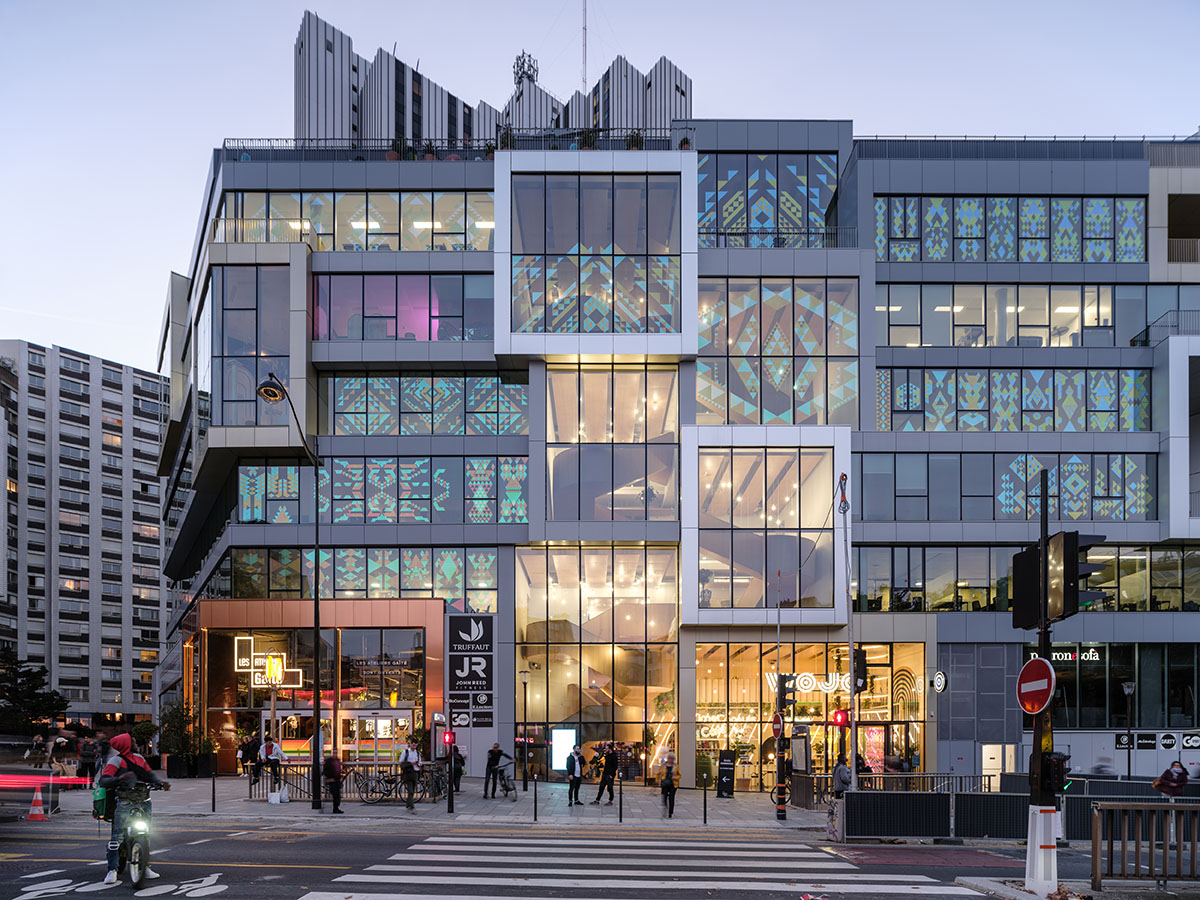
MVRDV has completed the transformation of Paris' 1970s mixed-use block in Paris, France.
The overhaul of 108,000-square-metre project, named Gaîté Montparnasse, incorporates a new façade, internal restructuring and extension of mixed-use block with a hotel, offices, commercial spaces, a library, 62 social housing and a 350-square-metre kindergarten.
After MVRDV received a planning approval in 2015, the project was completed in 2022, although the design phase of the project began in 2008.
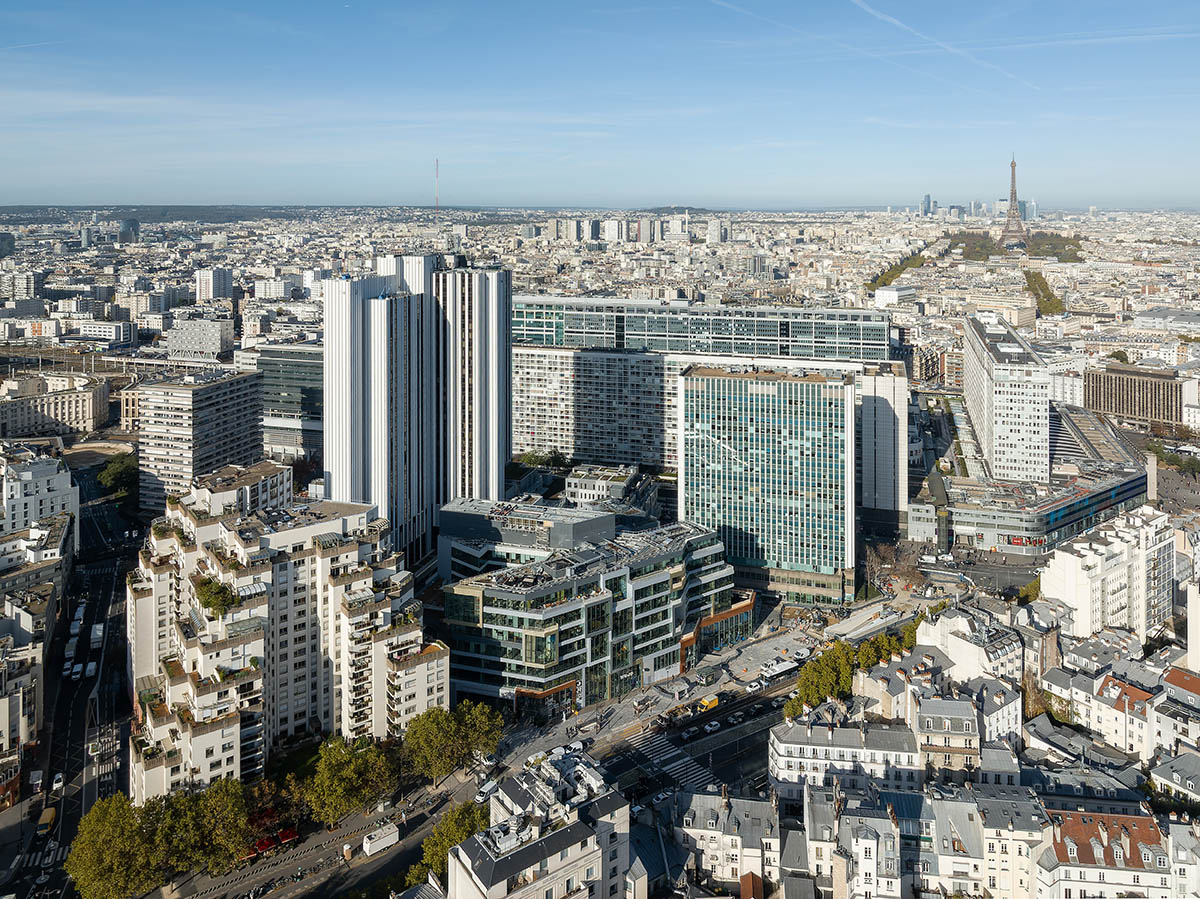
Located in close vicinity to Tour Montparnasse, the mixed-use block, known as "Îlot Vandamme", was originally completed in the 1974 by the French architect Pierre Dufau.
The project was as one of the largest urban projects implemented in Paris at the time.
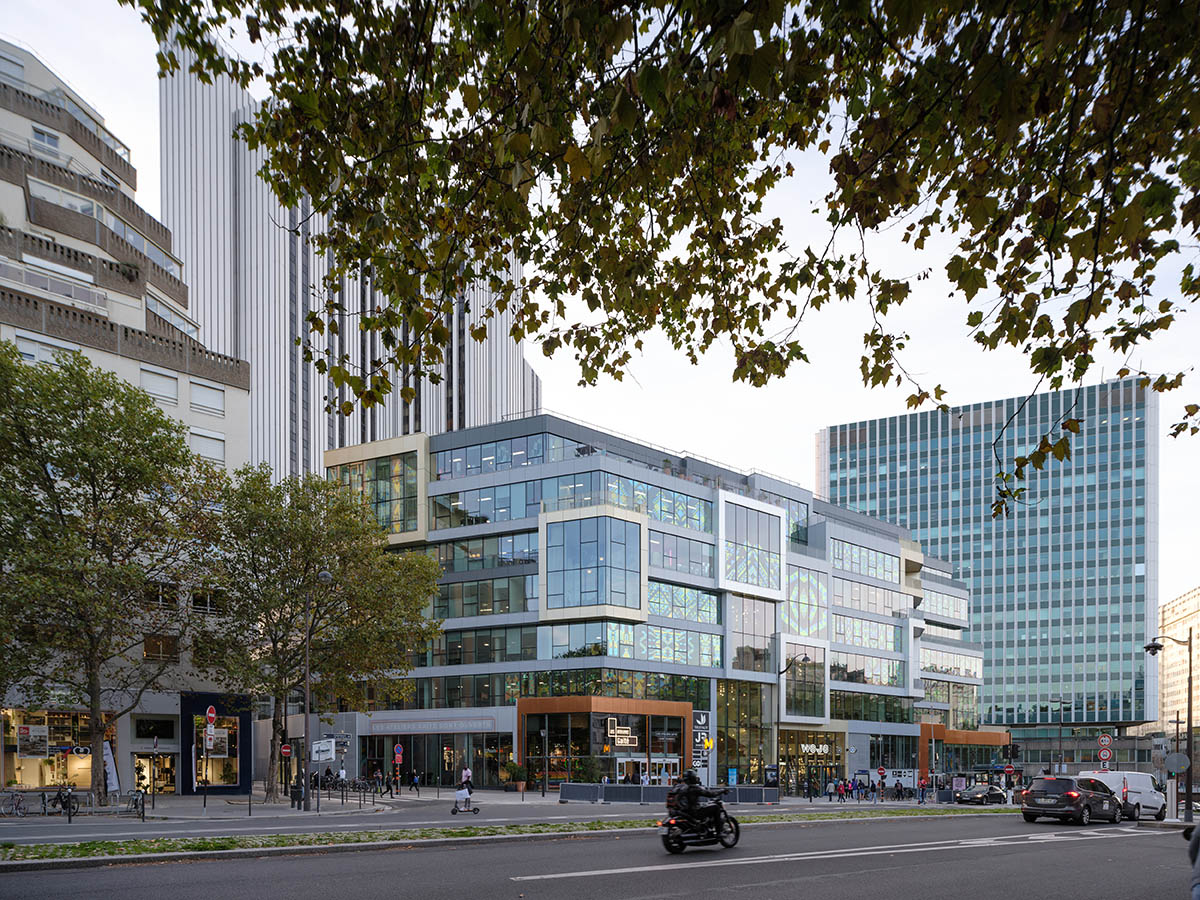
With this large-scale transformation, MVRDV made the building more welcoming and accessible to pedestrians, while reusing significant parts of the previous structure from the 1970s following circular economy principles.
The building had been known with its strong vertical lines of what is now the Pullman Hotel tower creating an unmissable presence in Montparnasse.
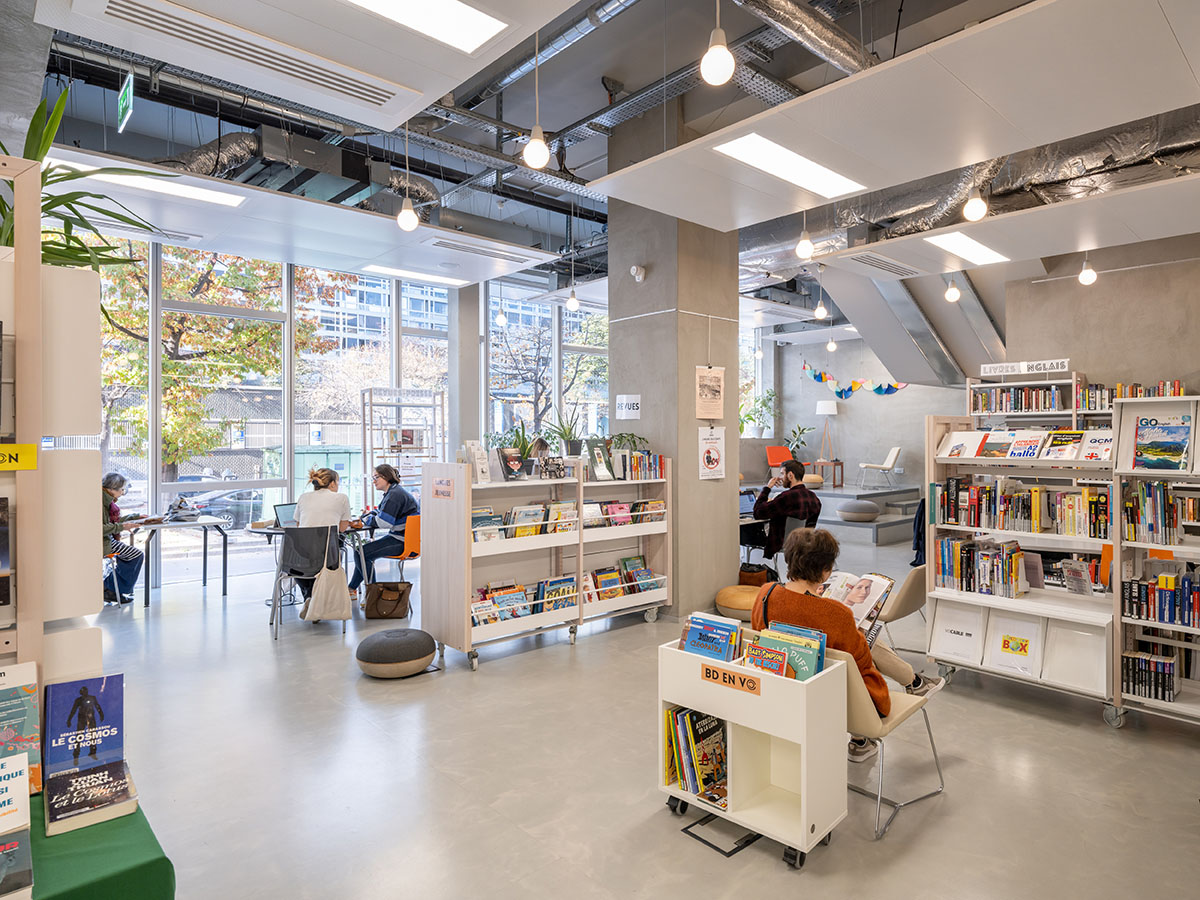
"At the same time, the plinth of rough textured concrete, boxy reflective glass, and red steel lattices epitomised the foibles of its era: surrounded by wide boulevards, the block was dominated by cars, and when viewed from the street looked introverted and unwelcoming," said MVRDV.

The design scheme sustainably reuses as much of the structure of this plinth as possible, while dramatically altering the building’s relationship to its surroundings.
The building now has a consistent street frontage along its main façade on Avenue du Maine, with large windows providing a clear view into the activities housed within.
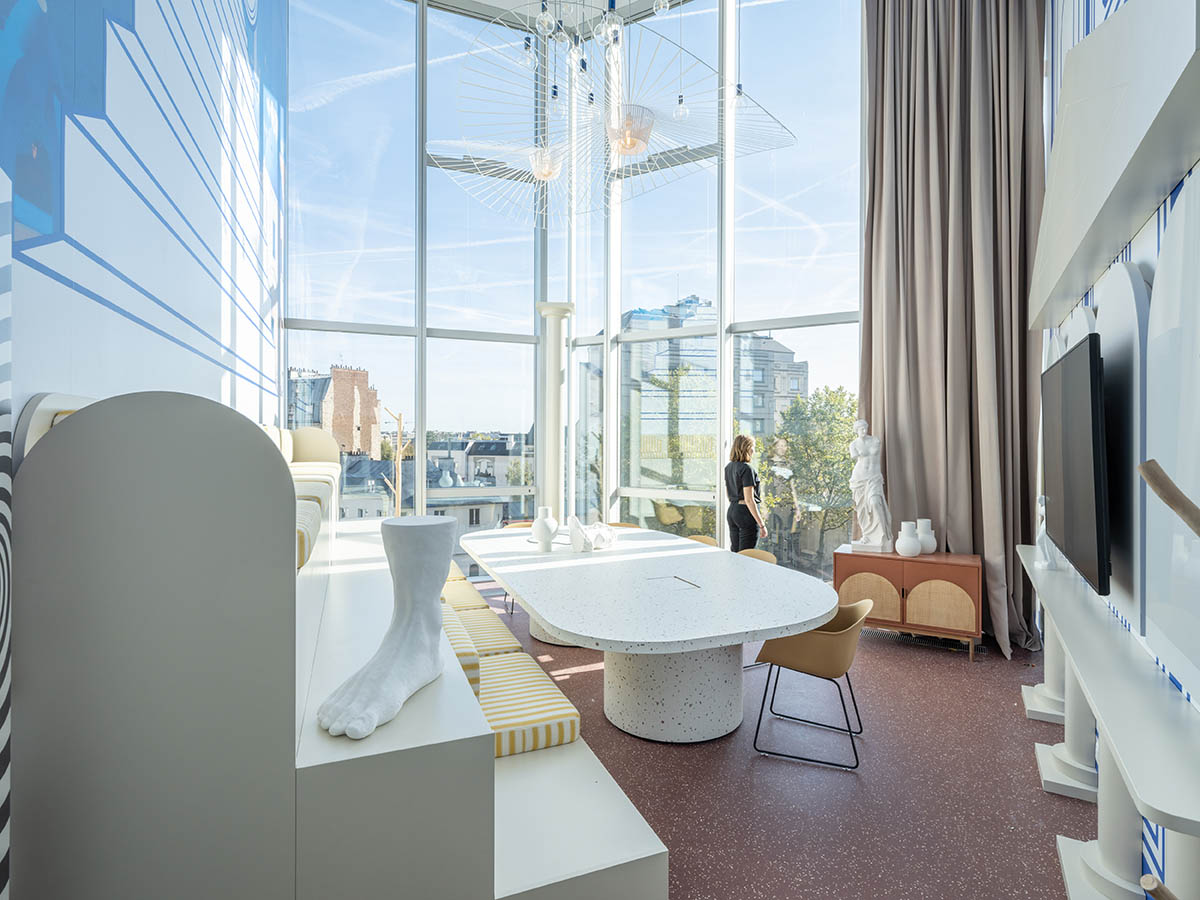
The studio breaks up this large mass into "a visually playful façade" by implementing a selection of different cladding tones, various small setbacks and overhangs, and balconies and showcase windows in large, multi-storey frames.
The studio's first principle was also rethink the arrangement of programme within the block. "The two-storey shopping centre that fills most of the site is now topped by multiple blocks, significantly densifying the area to make maximal use of this city centre location," the firm added.
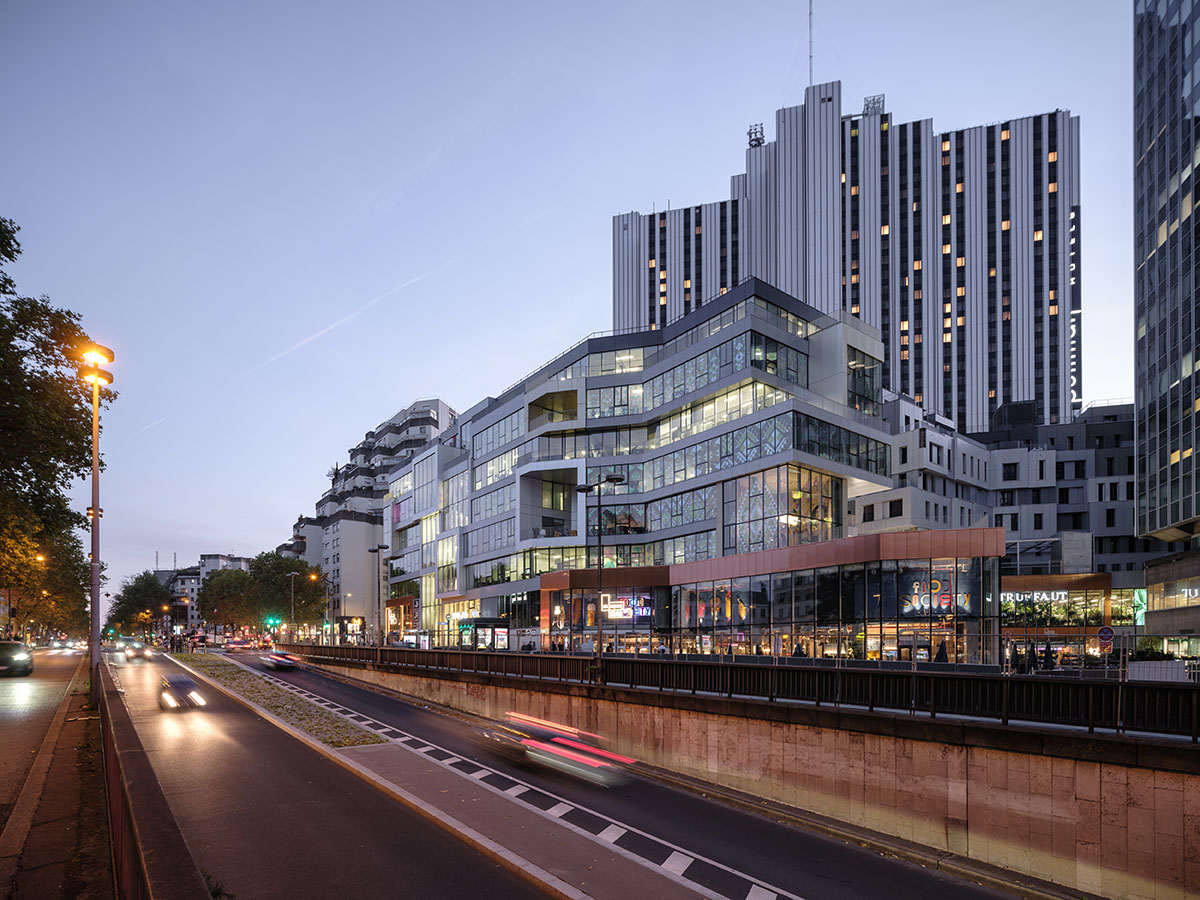
While offices were previously arranged in three storeys over the top of the shopping centre, the studio now scattered the office units into a seven-story block on the east of the site, forming part of the building’s main façade.
At the heart of the site, in between the hotel tower and the Le Héron office block to the north, the design incorporates a block of 62 social houses and a kindergarten.
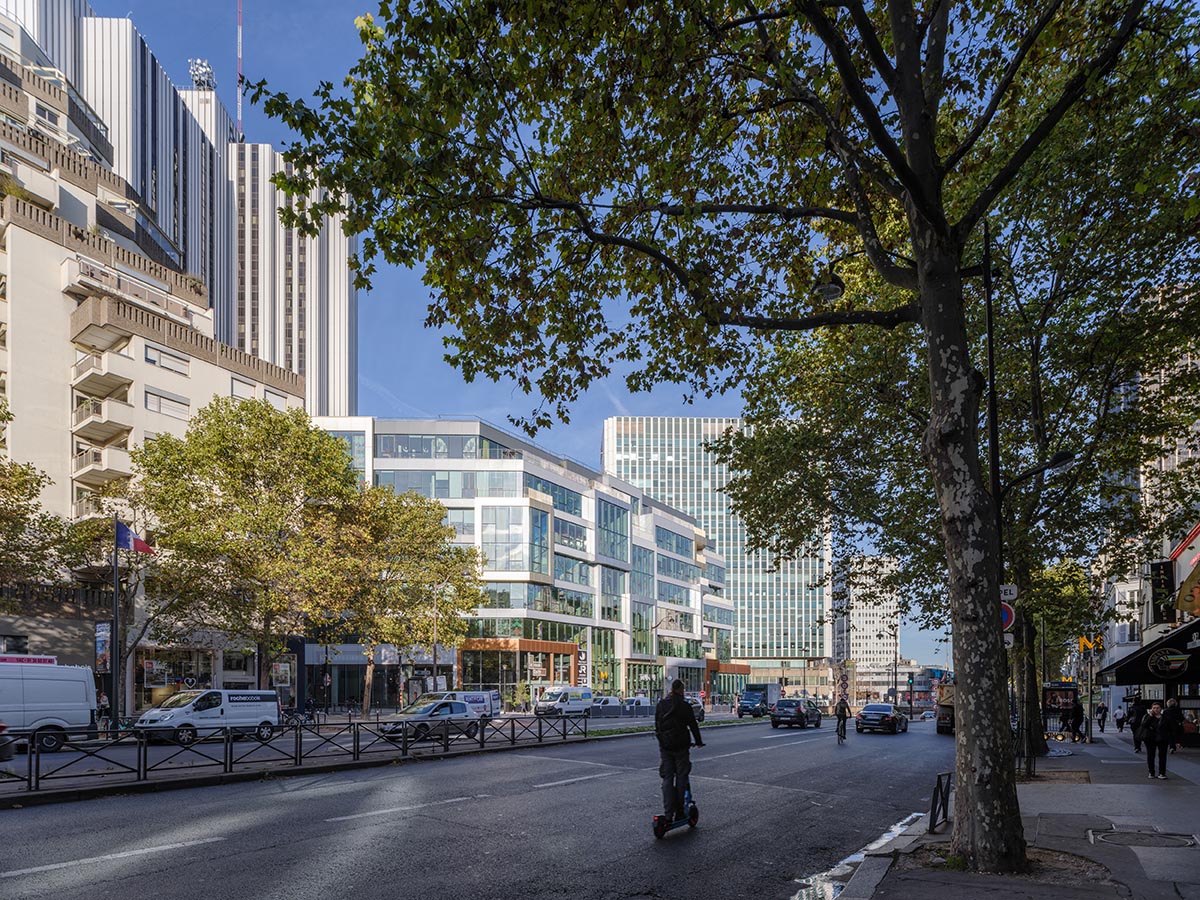
The library, which was previously designed underground, is placed in a two-story area on the other side of the hotel tower, making it more visible and accessible.
"This piece of the city was like an island of ‘70s nostalgia – a tower with no visible entrance, and a plinth where you could get lost between the pedestrian slabs and automobile boulevards," said MVRDV founding partner Winy Maas.
"The first step in the design was a study to fragment the block and to make sustainable density – adding new programmes such as homes and revealing hidden ones like the library."
"It created a kind of explosion of buildings that combines large and small scale, existing and new programmes, where everything mixes and opens up to the city with lobbies and windows of varying scales like so many addresses," Maas added.
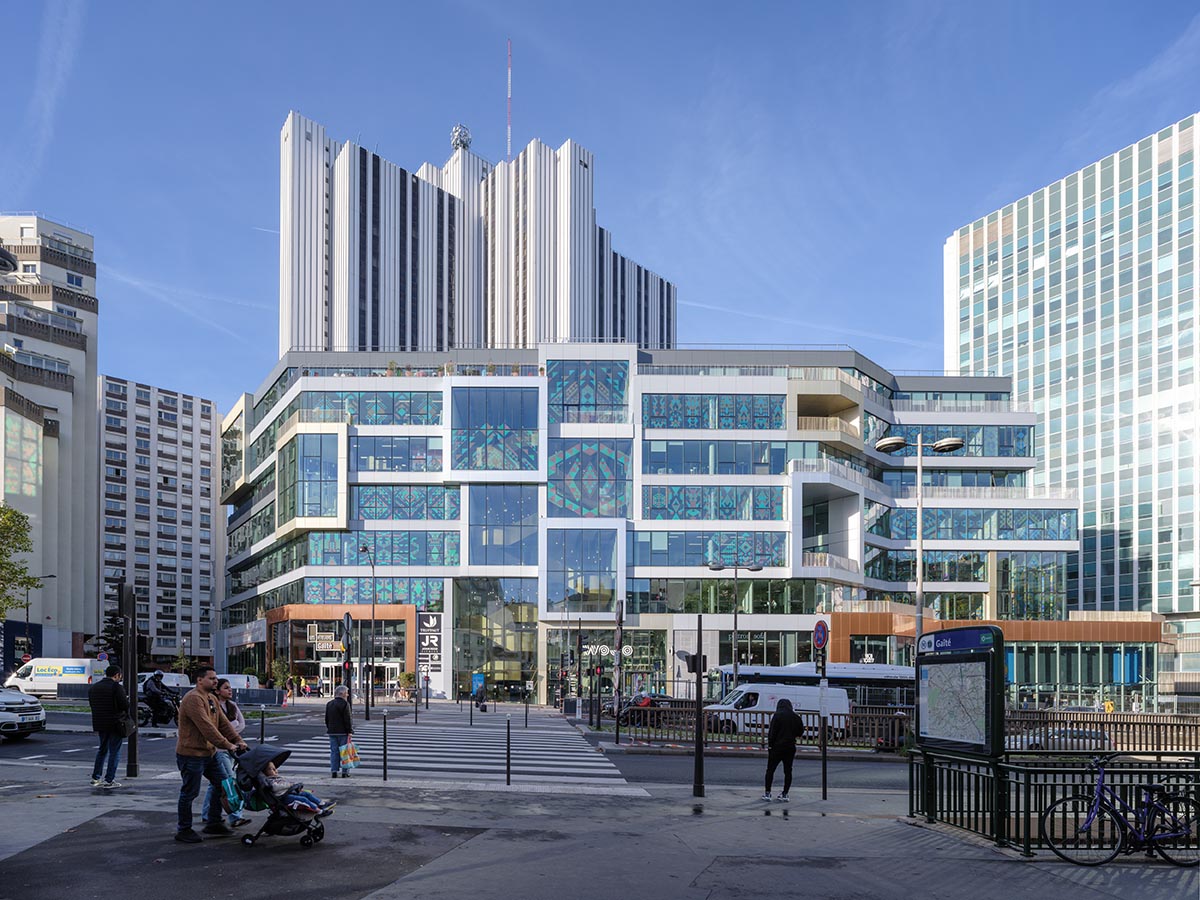
The firm highlights how Gaîté Montparnasse's design can be achieved using sustainable and circular economy approaches, even in the most dramatic transformations.
The new design appears completely unrelated to its predecessor – even the floorplates are shaped differently to the 1970s design – and yet it carefully reuses this concrete structure wherever possible, stitching the old floor plates into the new plans.
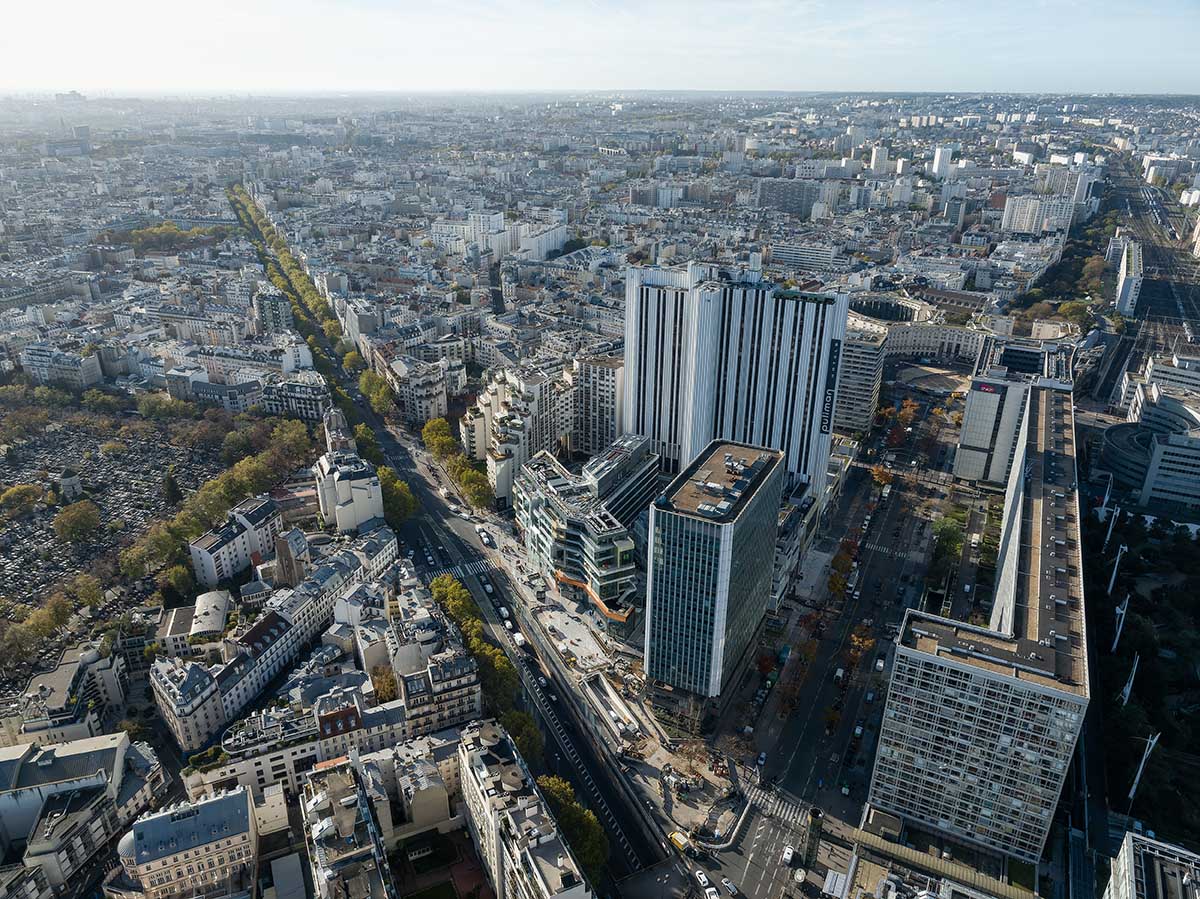
For the addition of the housing block, a timber structure was used to reduce the carbon footprint of the new construction.
"The process of transforming an urban block on such a large scale becomes ever more precise, and yet is never finished," added Maas.
"To know which piece of concrete to keep and which to cut, how to occupy, redevelop, then reoccupy spaces, is a continuous conversation."
"The conclusion of the current transformation process is a milestone in the history of this urban block, to be sure, but it will continue as a DIY process in permanent evolution. This great project is not finished; it must continue," Maas continued.
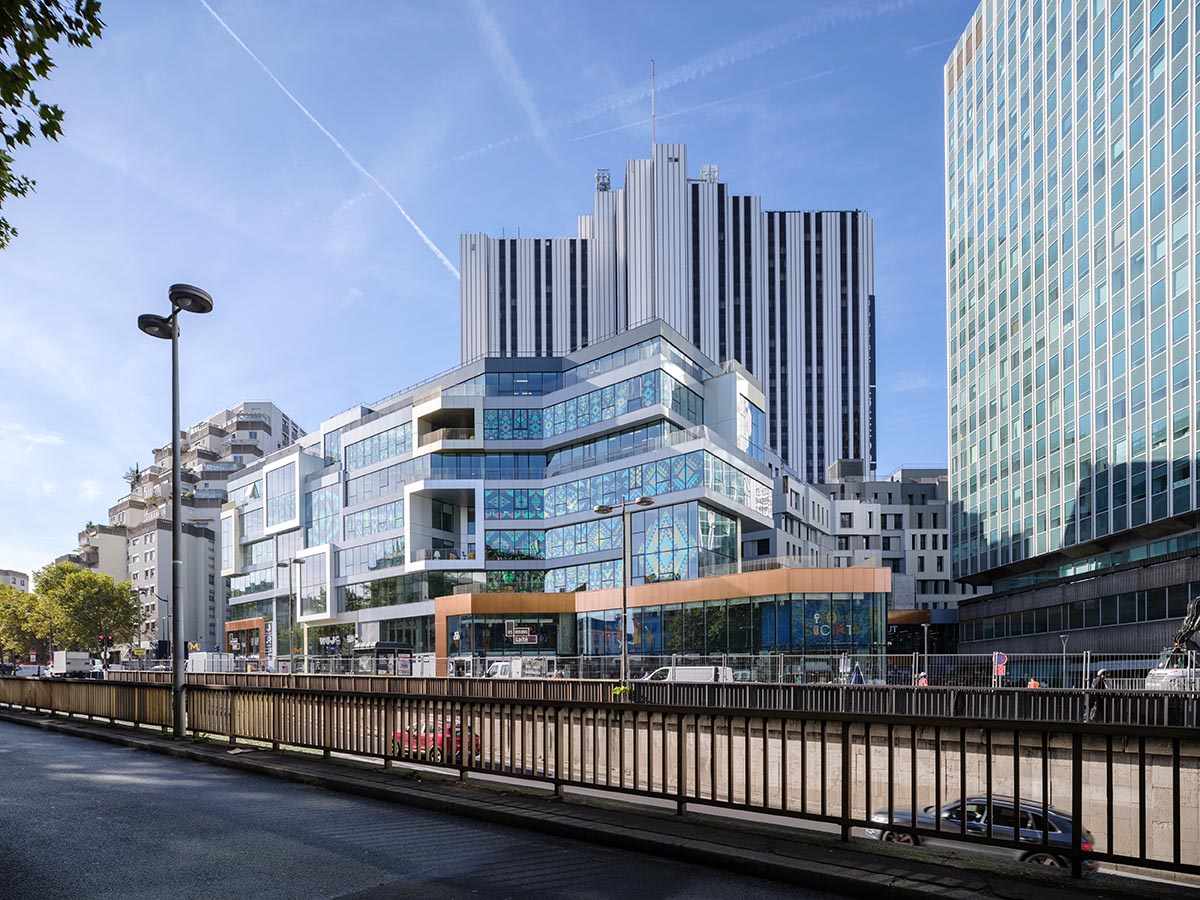
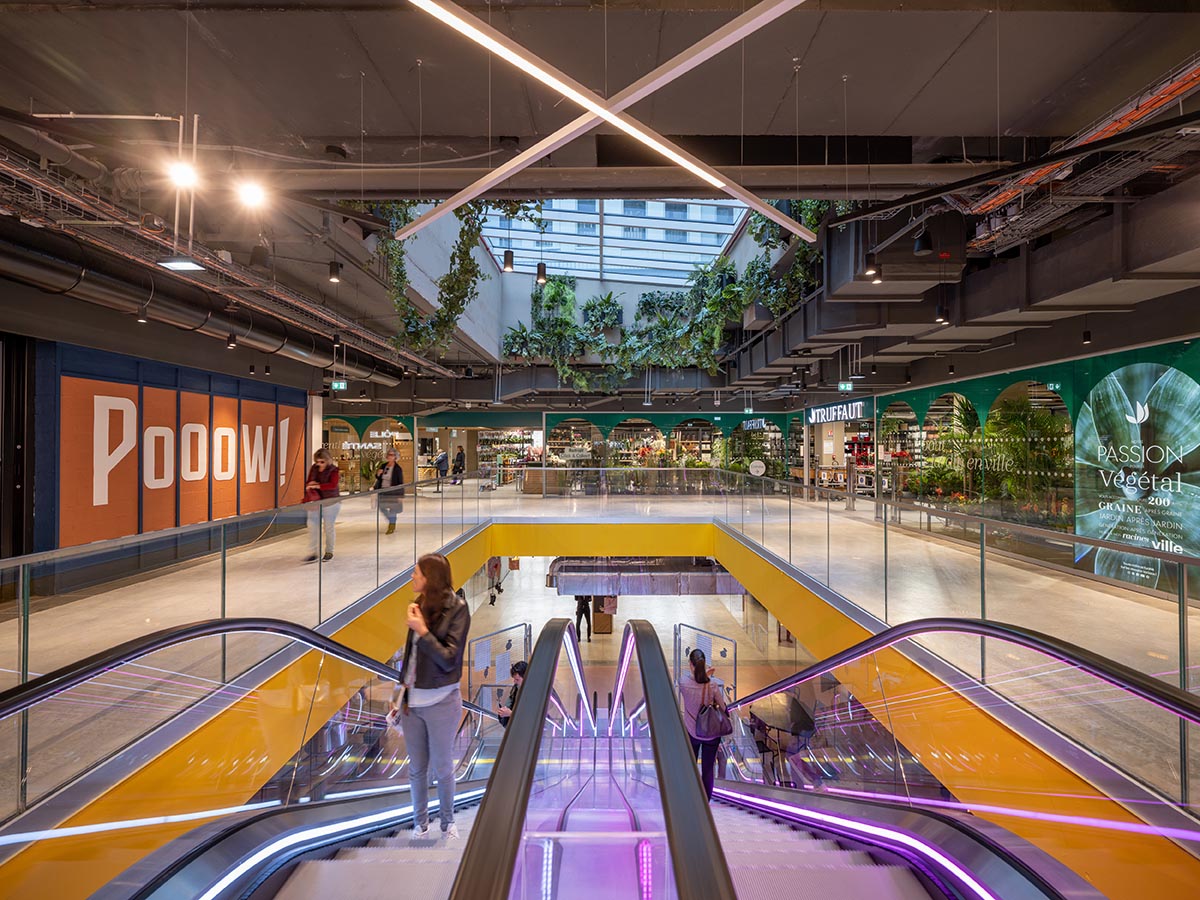

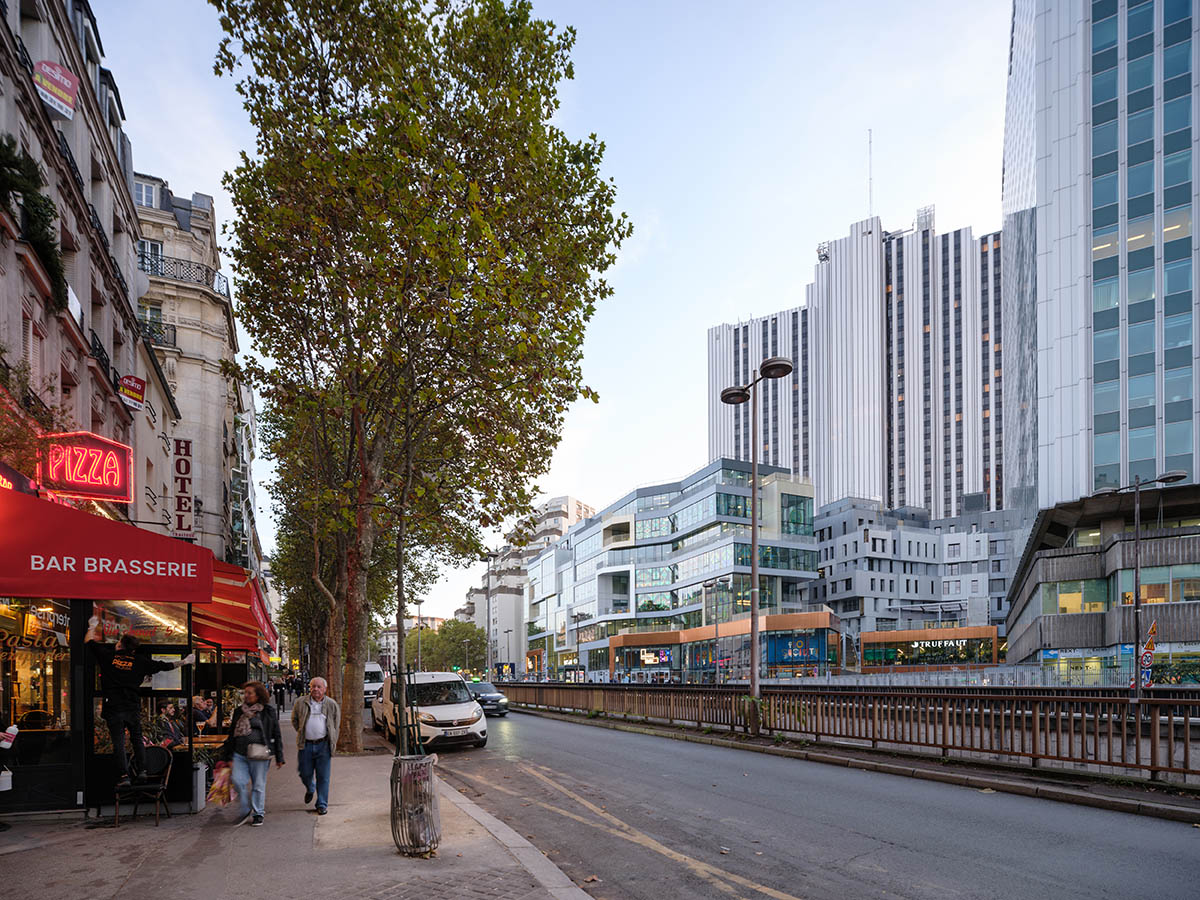
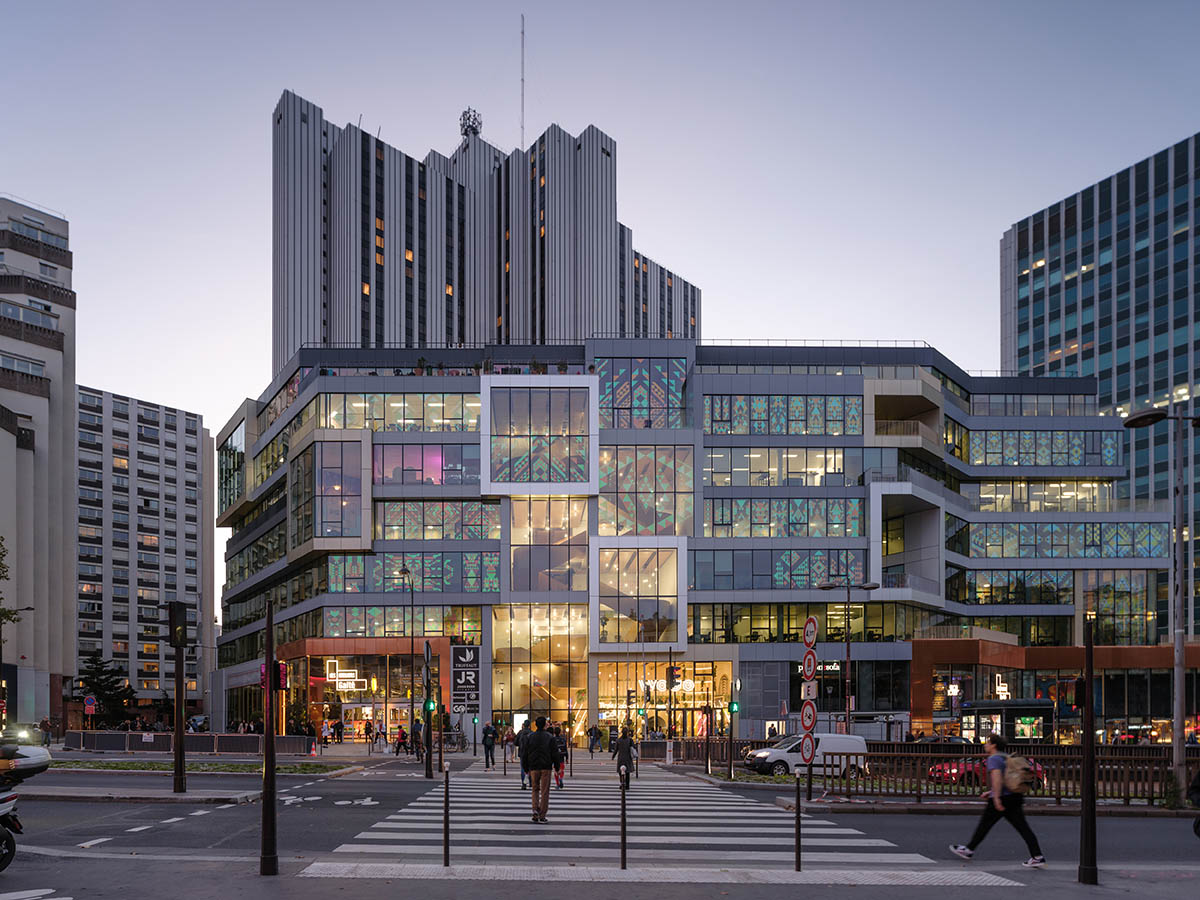
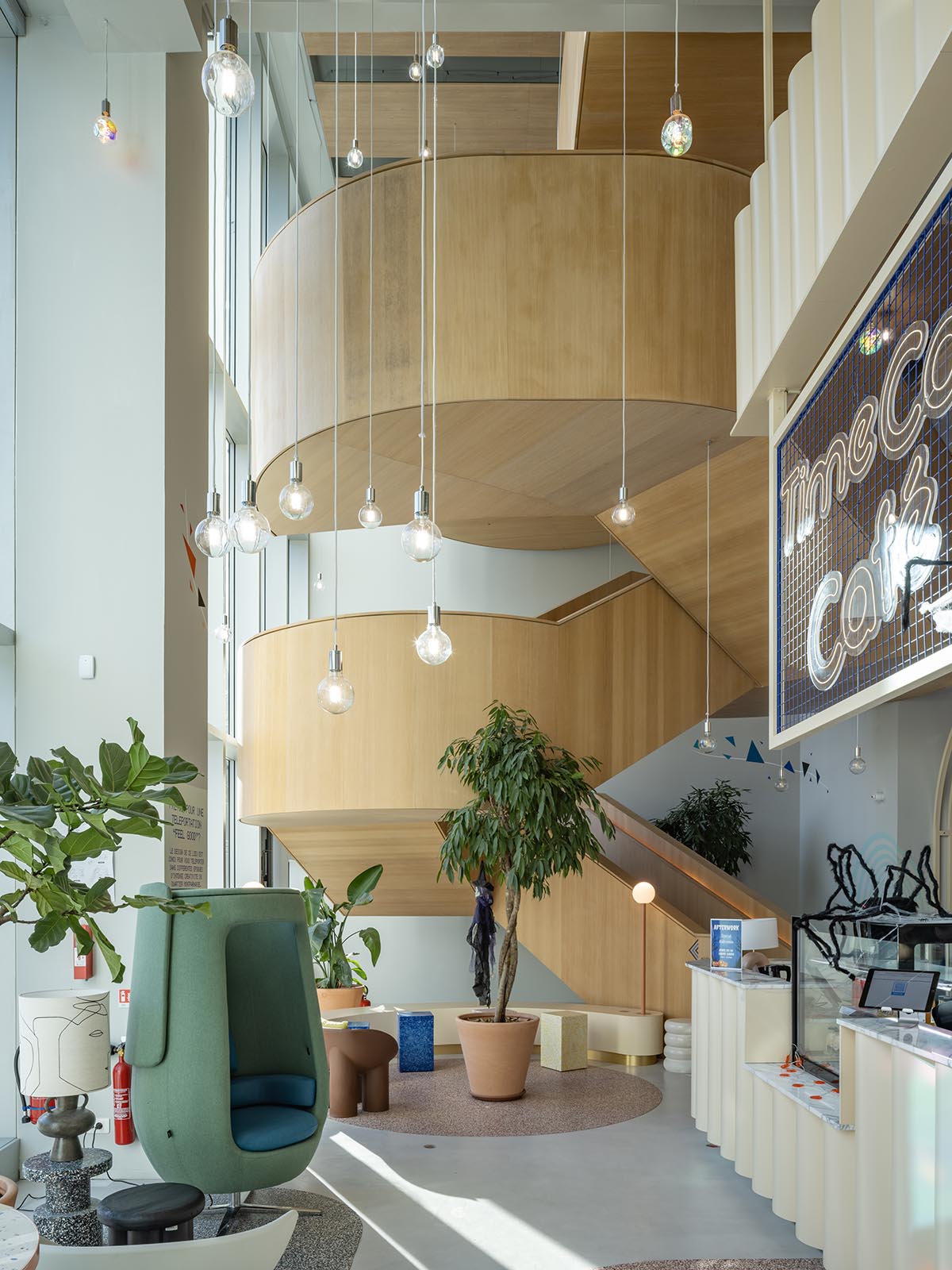


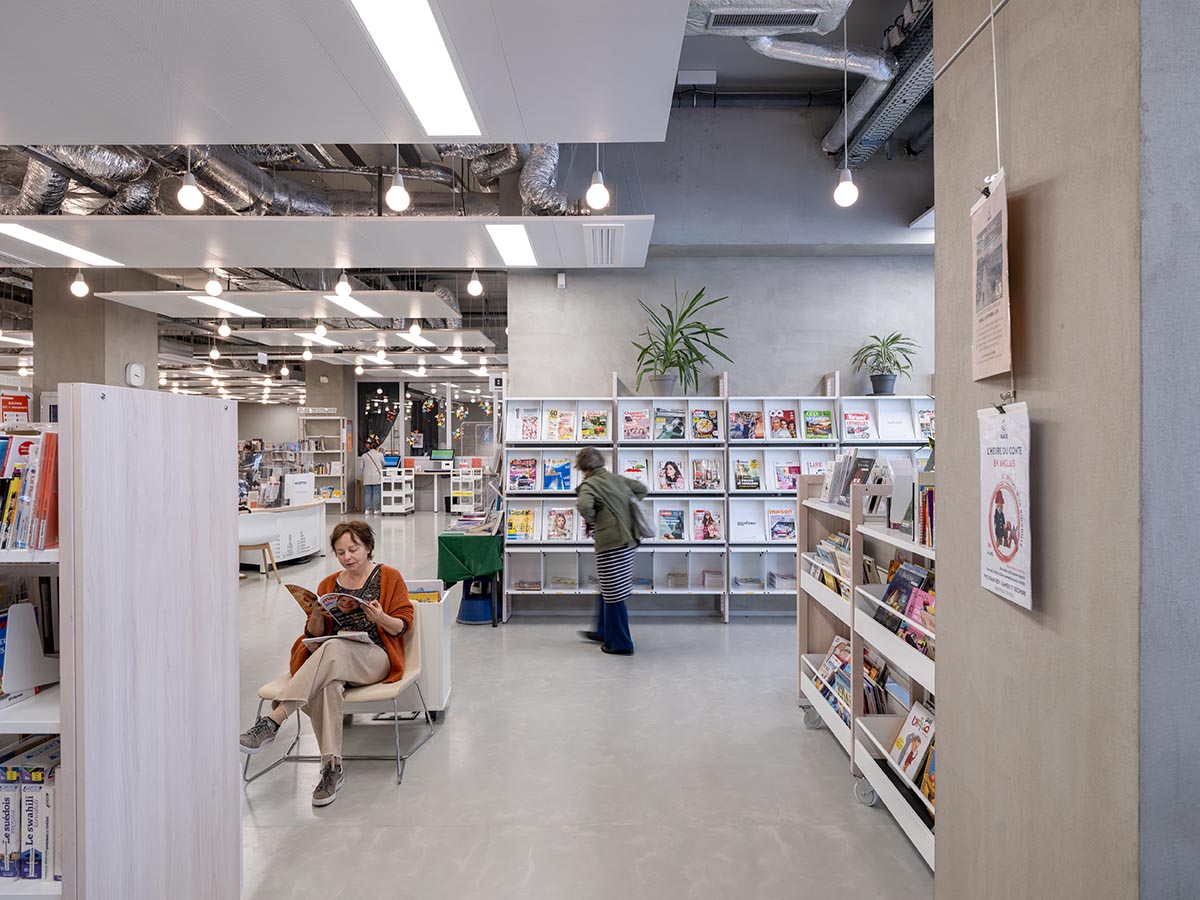


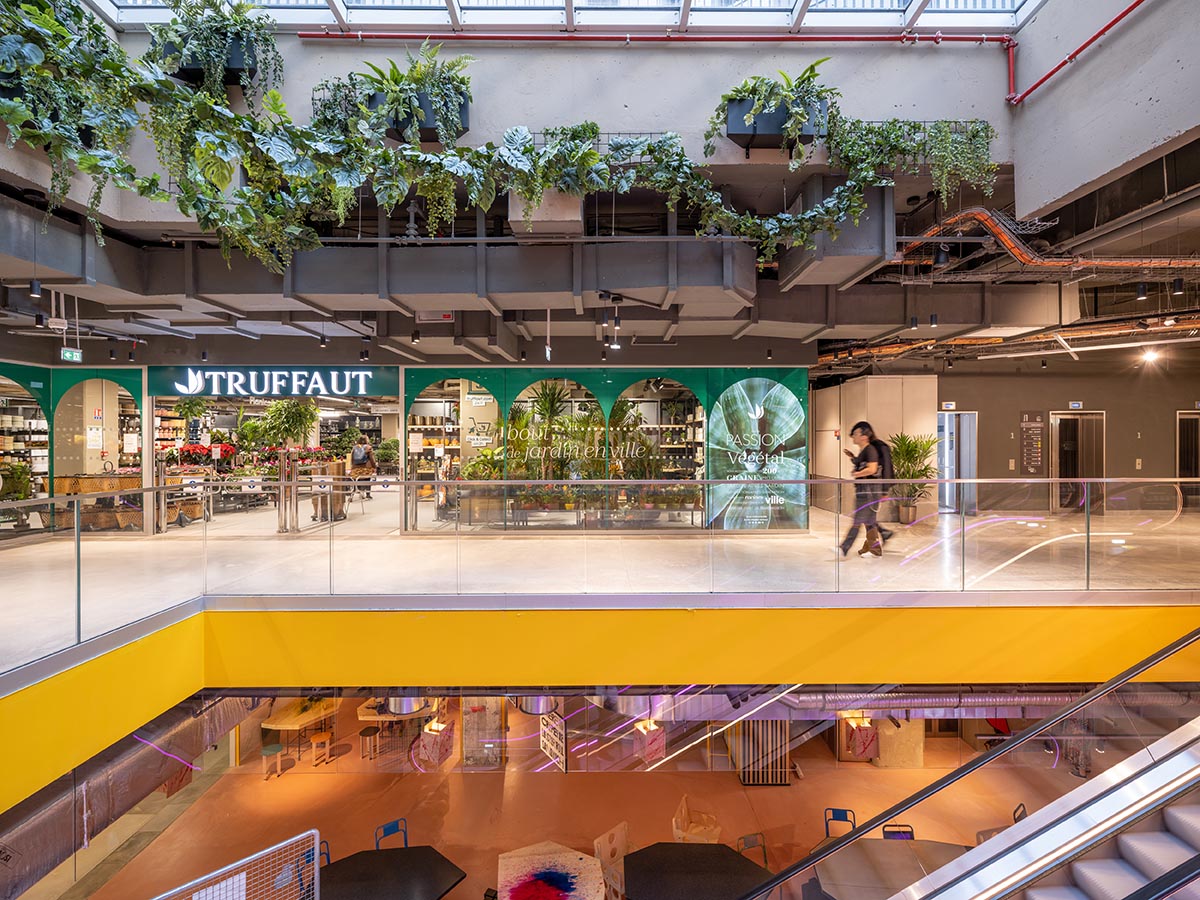
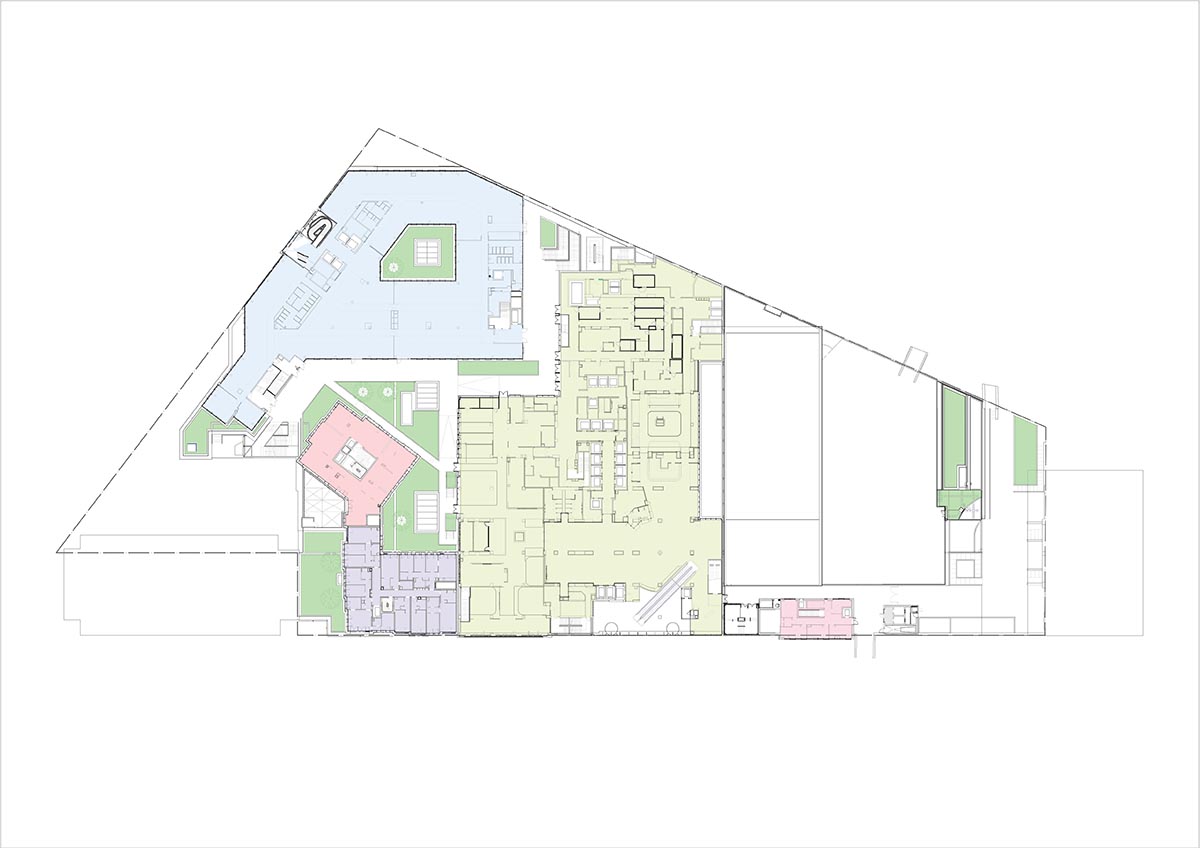
Floor plan
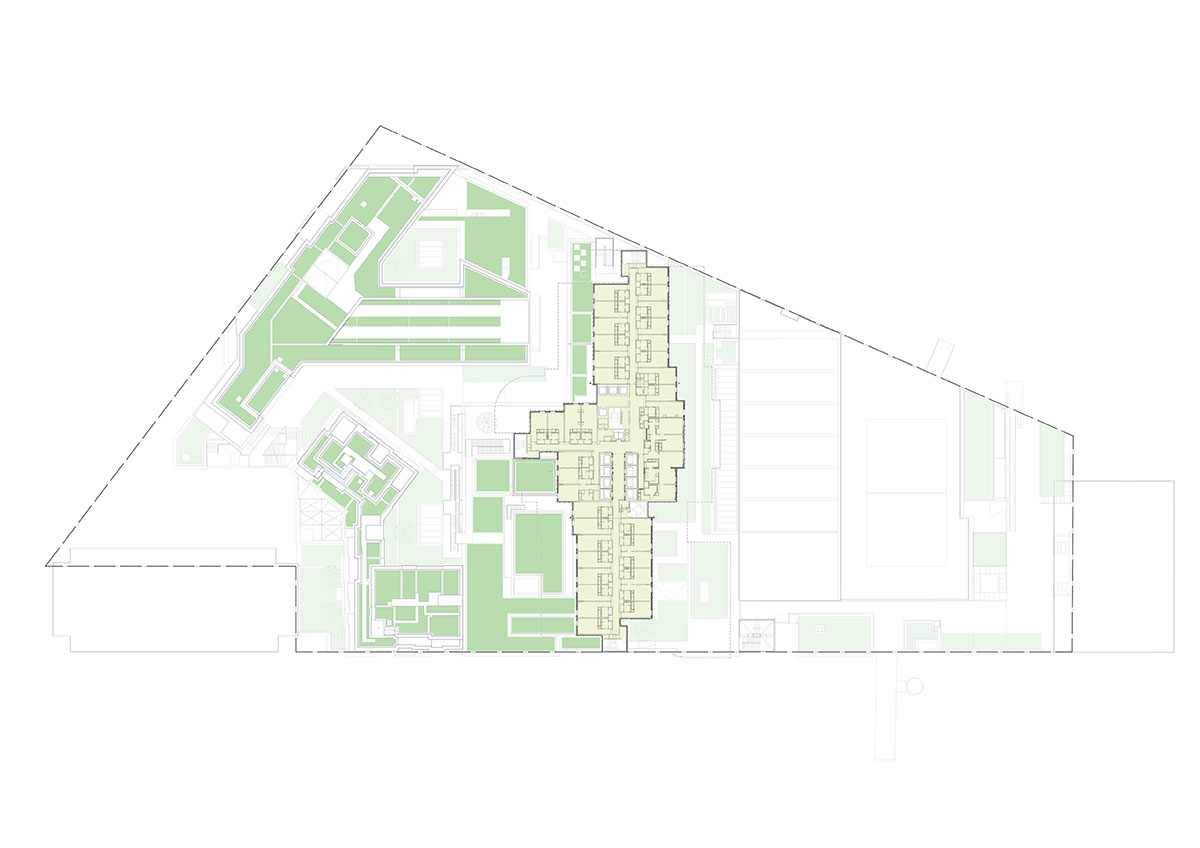
Floor plan
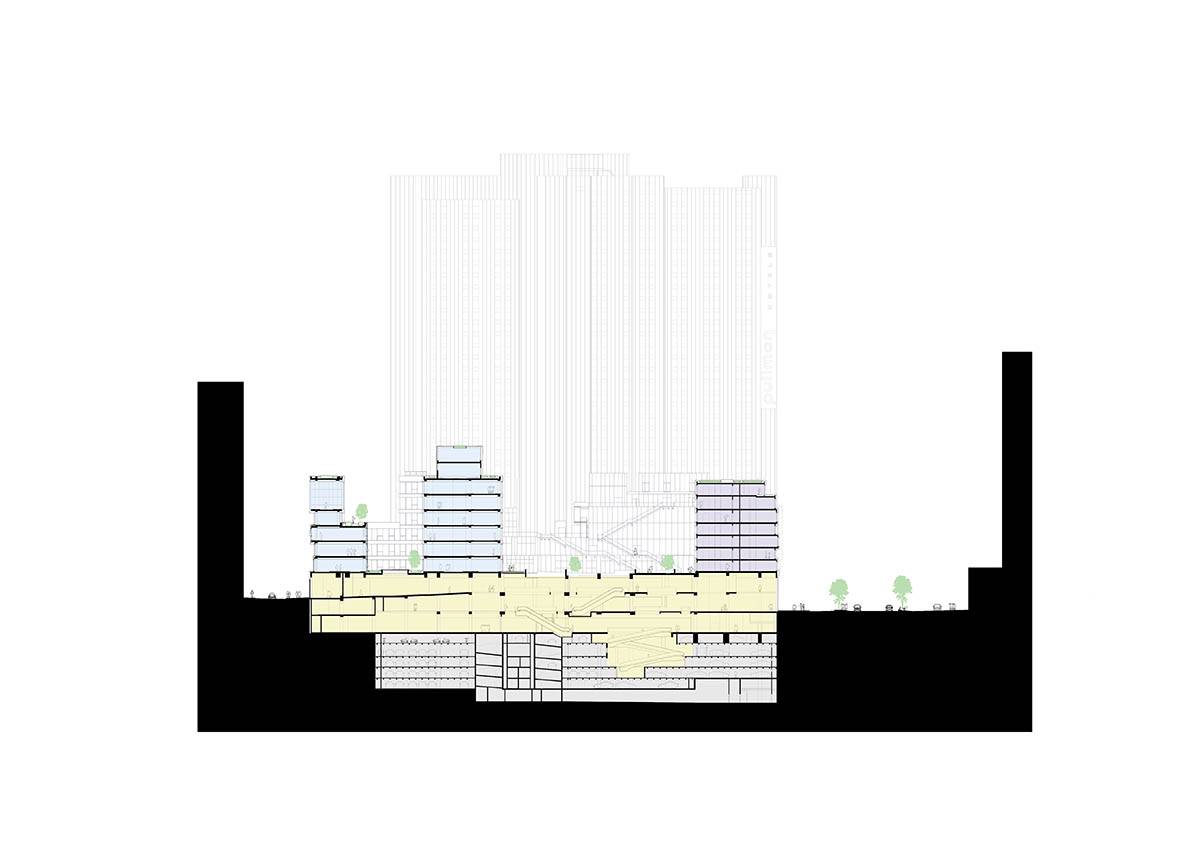
Section
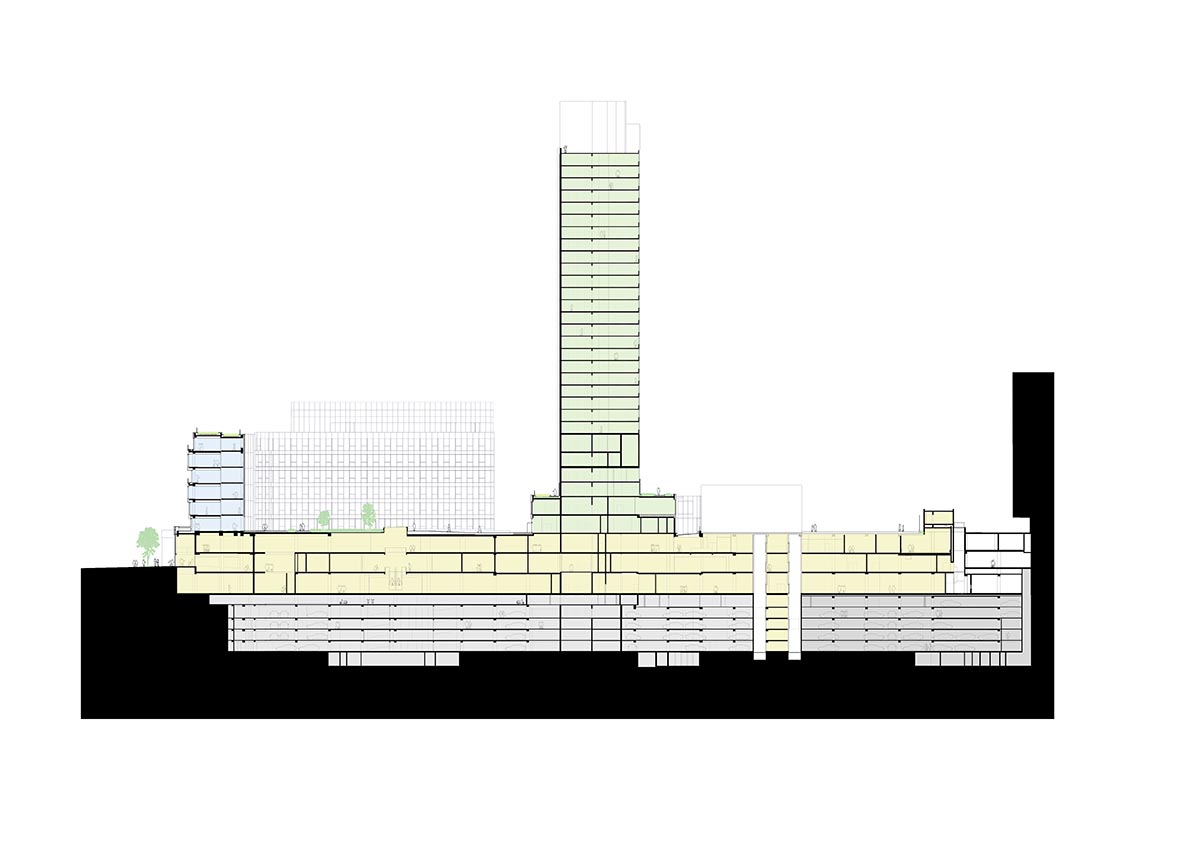
Section
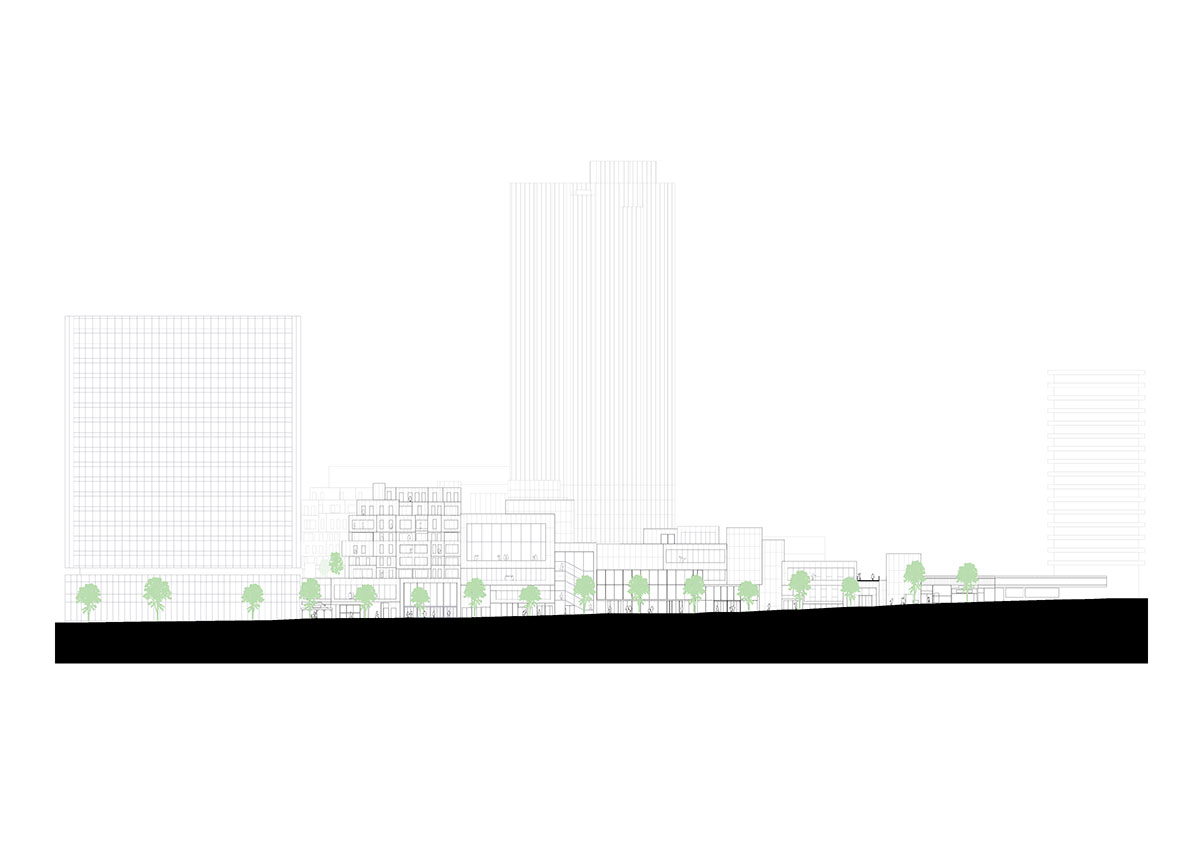
Elevation
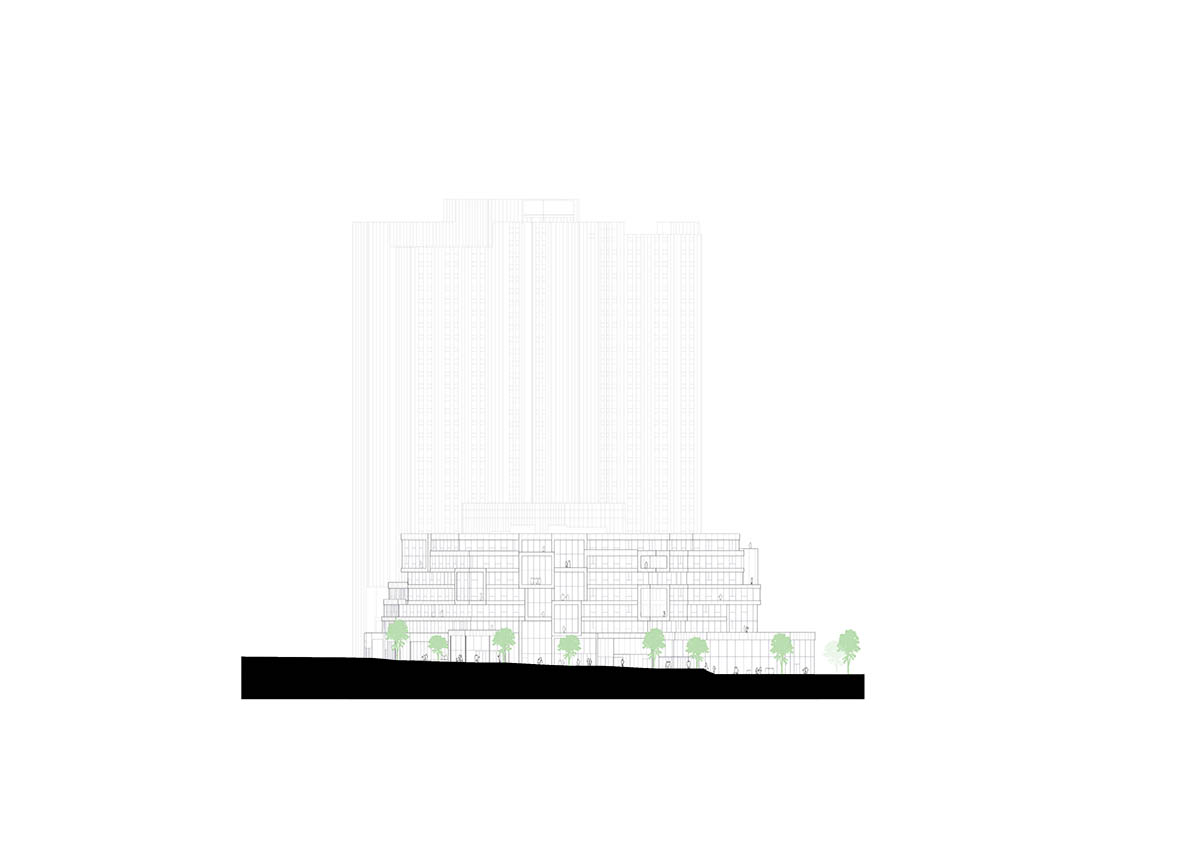
Elevation
Gaîté Montparnasse is the second transformation project completed by MVRDV for Unibail-Rodamco-Westfield in 2022, following La Part-Dieu shopping centre in the centre of Lyon, which turned another design from the 1970s into a vibrant piece of Lyon’s city centre.
MVRDV recently completed Ascension Paysagère, a new residential complex in the riverside of Rennes, France. The firm also completed completed its first US project in upper Manhattan, comprised of a stack of colorful volumes on top of each other.
Project facts
Project name: Gaîté Montparnasse
Architects: MVRDV
Principal in charge: Winy Maas
Partner: Frans de Witte
Location: Paris, France
Client: Unibail-Rodamco, France
Year: 2008+
Design Team:
Concept: Bertrand Schippan with Michael Labory, Catherine Drieux, Pierre des Courtis, Antoine Muller, Mikel Vazquez, Jonathan Schuster, Nicolas Bouby, Arjen Ketting, Jaap Baselmans, Pilar Zorraquin, Jill Pichon, John Tsang and David Jimenez Moreno.
Development: Michael Labory, Pierre des Courtis, Catherine Drieux, Andrea Anselmo, , Javier Cuenca Solana, Matteo Spalletti, Chiara Cappelluti, Solène de Bouteiller, Antoine Muller, Séverine Bogers, Daniele Zonta, Paul Sanders, Diana Palade, Mikel Vazquez Alvarez, Francis Liesting, Boris Tikvarski, John Pantzar, Stephan Boon, Clémentine Bory, Quentin Rihoux and Louis Laulanné.
Visualization
Images: Antonio Luca Coco, Paolo Idra Mossa and Tomaso Maria Maschietti.
Partners
Co-Architect: SRA Architectes, Chatillon, France
Interior Designer Hotel: CUT, Paris, France
Interior Designer Commercial Center: Saguez, Saint-Ouen, France
Construction Pilot: Egis, Montreuil, france
Engineer: SCYNA4, Ivry-sur-Seine, France
MEP Engineers: LAFI + INEX, Vaulx-en-Velin, France
Economist: Vanguard, Paris, France
Façade Engineer: Arcora, Rueil-Malmaison, France (formerly RFR)
Acoustic Engineers: LASA, Paris, France
Fire Safety Consultant: BATISS, Ivry-sur-Seine, France (formerly Nicolas Mayeur & Francoise Follaci)
Environmental Consultant: Artelia, Paris, France
Sustainability:
Commercial Center: BREEAM Excellent
Hotel: HQE Rénovation
Offices: HQE Excellent, BREEAM Excellent
Library: HQE
Kindergarten: HQE, Plan climat Paris
Housing: H&E, profil A – Option Performance, Plan climat Paris
All images © Ossip van Duivenbode.
All drawings © MVRDV.
> via MVRDV
